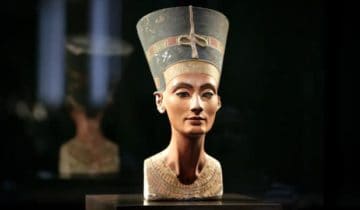In Telling the full story of African art just got harder, As told to Patrick Smith in July 2019. Gus Casely-Hayford was recently announced as the new director for London’s Victoria & Albert Museum new expansion, V&A East, where he will start in Spring 2020. Full article is at theafricareport
African art is going through an incredible renaissance in the US. Currently director of the Smithsonian National Museum of African Art, Gus Casely-Hayford sat down with The Africa Report to explain in his own words how fast and deep the change is.
“If you visit any international art fair you will see not just African artists front and centre, but the way in which galleries are promoting those artists is unprecedented.
And that is a kind of recognition not just of the quality; it’s also about the investment potential. This is work which over the course of the last decade has seen prices accelerate at astonishing rates. And that is about a long overdue rebalancing of attention.
Prices rising and greater attention – it’s wonderful because it does boost the image of the museum, but simultaneously it creates challenges for us. We have to acquire the art of rising artists who are new on the market, but also of those artists that have already made it.

A generation ago much of the work was within the range of our museum to acquire. But now it’s tough to build the budgets, to be able to respond to the markets because a piece will come to market and we may have six months’ notice to raise that kind of money. […]
And the market is shifting. If you don’t get in at a price that is eye-watering you may lose the chance to ever get in because the prices are only going in one direction.
We want to be able to tell the full story of African art. Ours is one institution that can do that across time, across geography.
Bring African art back to Africa, and find it good homes
Provenance is critical. We [the National Museum of African Art] were established in 1964, in that moment of decolonisation. So we don’t have that kind of relationship to our collections that many institutions in Europe do.
We’ve always tried to find ways of working equitably with museums in Africa, and I’m keen to push that further. We want to partner where we can in this exciting moment as a new generation of museums are being established across the African continent – to partner with them, to change the way in which we see the African museum sector.
So there’s a real opportunity there. The report by the French presidency has suggested that as many as 70,000 works may return. But return to what? To where? We want to be sure of the other parts of the equation: how we can develop first-class museums supported by well-remunerated teams.
Culture as an ambassador
We did a survey and there’s something like 317 museums across the African continent. There is more than enough artwork in stores across the world to make sure that all of those institutions are full.
There is amazing artwork, expertise and personnel moving in both directions, which is why I think these works are so important. We need to think about how they can communicate what’s best about the continent. And they do that not just if they’re in Lagos or in Cairo but London or Washington DC.
These works speak to everyone.
Africa is seeing that some of its the most powerful ambassadors are its cultures. I think Picasso wanders into the Palais de Trocadéro in 1905 and he sees work which transforms him. That wasn’t about interpretation, that was about the art. That potential for transformation is something we should be facilitating for everyone.
A booming market for African art is just reward
Most artists crave recognition and being in catalogues, being exhibited in shows in major museums and galleries. They also crave the reflection of their status through the price of their work being matched accordingly. I think it’s only right that people who work hard are rewarded, and it’s wonderful that this generation of African artists is finding its rightful place within the market.
Information to help beat art exploitation
We’re living in the age of mobile telephony. Africa, probably more than any other part of the world, has been transformed by the possibilities of that in the cultural sector.
So I think that the potential for artists to really keep track of their place within the wider kind of cultural ecology is greater now than it ever has been. And many African artists are finding ways of taking advantage of that, and that’s a good thing.
There are areas of the art market which seem exploited but it was ever thus and knowledge is a way to arm oneself against the potentiality of that. And there are great galleries on the continent that are serving the first-class artists and are selling to African collectors and so there are African solutions to this. Africa is not an isolated continent, it is part of the global ecology.
The transformational power of African art
The museum came into being in 1964 through the strength of will of [collector] Warren Robbins. Many of the peoples of African descent who lived in Washington DC were marginalised from the main cultural offering of the Smithsonian and he wanted to find ways of drawing those people back into museums.
So he created his museum, which later on became a part of the Smithsonian. And it’s always had that remit of finding ways to use the transformational possibilities of art to draw in wider audiences.
Art should be an opportunity to broaden the sorts of people that come into museums, and African art is so good at doing that.
Running this institution, I want to find ways of turning that proposition into something that works in the 21st century. So we’re not just talking to those communities in Washington or across the US but speaking globally about the value of African art for everyone.
We have a wonderful set of exhibitions at the museum. And our permanent collection is one of the finest in the world in terms of telling the full story of African cultural production across time, but also to the contemporary movement too.
At the moment we have ‘Striking Iron’, an astounding show.
You stand in that show and it gives you a sense of how artistic traditions across the continent are influencing each other, not just across time but also across geography. We have a beautiful show on Senegalese gold which is about skill but also about the love of objects: how these pieces of jewellery tell the story of ownership as well as their making.
Then we have ‘I Am’, an exhibition which tells the story of contemporary women artists. We have to change the way we represent women within our collection because they just aren’t fairly represented. It’s a wake-up call for us and astonishing work which says things about contemporary Africa.”
Telling the full story of African art just got harder





 No products in the basket.
No products in the basket.